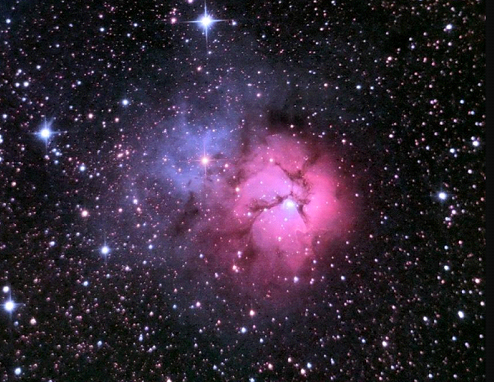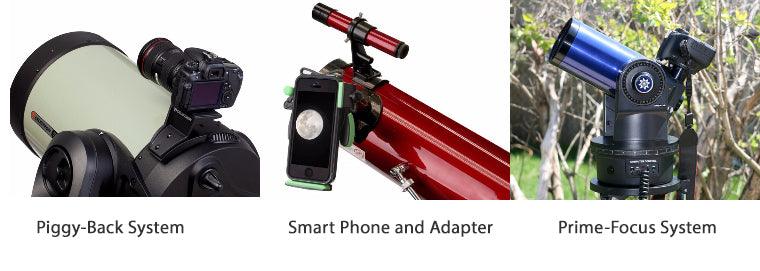Astrophotography Telescope Buying Guide
Astrophotography is one of the most popular aspects of modern astronomy. Determining what telescope, mount and other equipment to get though, can be a complex process.

Key considerations that will affect your decision are:

Bright objects such as planets?
Dim deep sky objects such as star clusters, nebulae and galaxies?
Both bright and dim objects?
There are several ways;
* Piggy-Backing your camera to the telescope/mount
* Aligning your point-and-shoot camera or phone to your telescope eye-piece
* Prime-Focus Photography - Using you telescope as a telephoto lens for your SLR (single lens reflex)digital or film camera
* Eyepiece Projection Photography - Using your telescope and eyepiece so that photographed objects in these images are considerably larger and show more detail than such taken with prime focus shots.

Following are key considerations and information to assist you getting started with equipment selection for Prime-Focus Astrophotography.
For prime-focus astrophotography, in addition to your Digital Single Lens Reflex Camera ( DSLR) you also need to consider your telescope and mount.
1. The Telescope for Prime-Focus Astrophotography.
To assist, following is an overview of key terms used when discussing telescopes for astrophotography.
Aperture-is the diameter of the main lens or mirror. It very important for visual observation but less so for prime-focus astrophotography.
Focal–length is the distance form a mirror or lens to the image it forms.It is a more important consideration in prime-focus astrophotography as the telescopes focal length determines the magnification.Note the focal length can be increased with a Barlow lens or decreased with a focal reducer.Greater magnification results in a smaller field of viewLesser magnification results in greater field of view.
Focal Ratio is the focal length / aperture. This is not important for visual astronomy but is for astrophotoghy the focal ratio is very important as it determines how quickly a photo needs to be takenFast (also called small) focal ratios are f/3– to f/7 needing shorter shutter speedsMedium focal ratios f/7 to f/10Slow ( aslo called long) f/10 to f/15 – needing longer shutter speedsNote: some cassegrain telescopes can have their focal ratio converted from f/10 to f/6 even f/3 making them ideal for a variety of applications.
2. The Mount
Arguably, this is the most important part of your setup and astrophotography is almost impossible without a good mount. Your equipment can get quite heavy and require much stability for long exposed images so if possible, always err on over-mounting your telescope and camera.
A motorised tracking system is also incredibly helpful and without this you will be unable to take clear images of the planets, other than the moon or deep sky objects. This is due to a long shutter speed being needed and as the earth is rotating, without a tracking system your object will move out of your image before sufficient exposure occurs.
